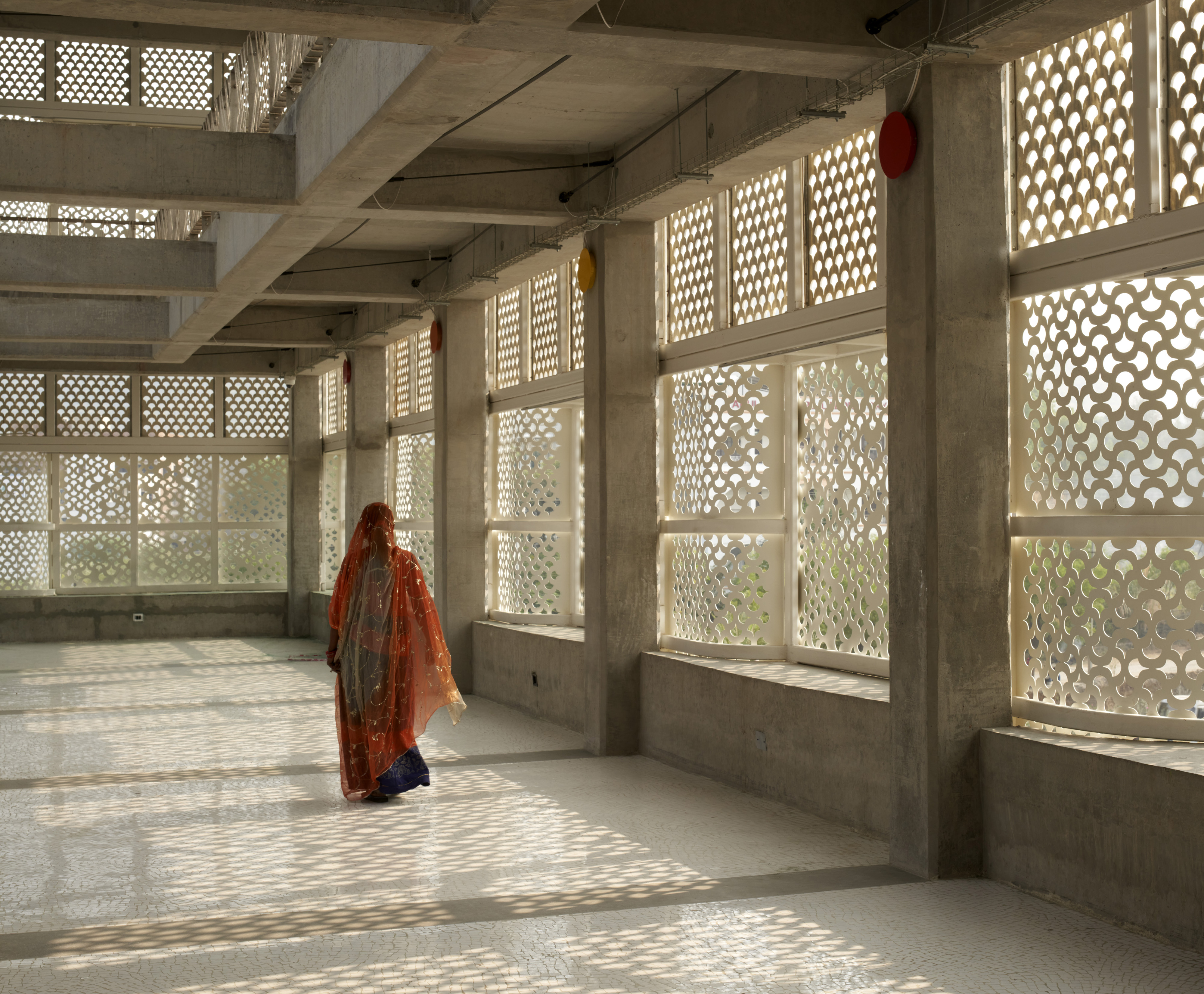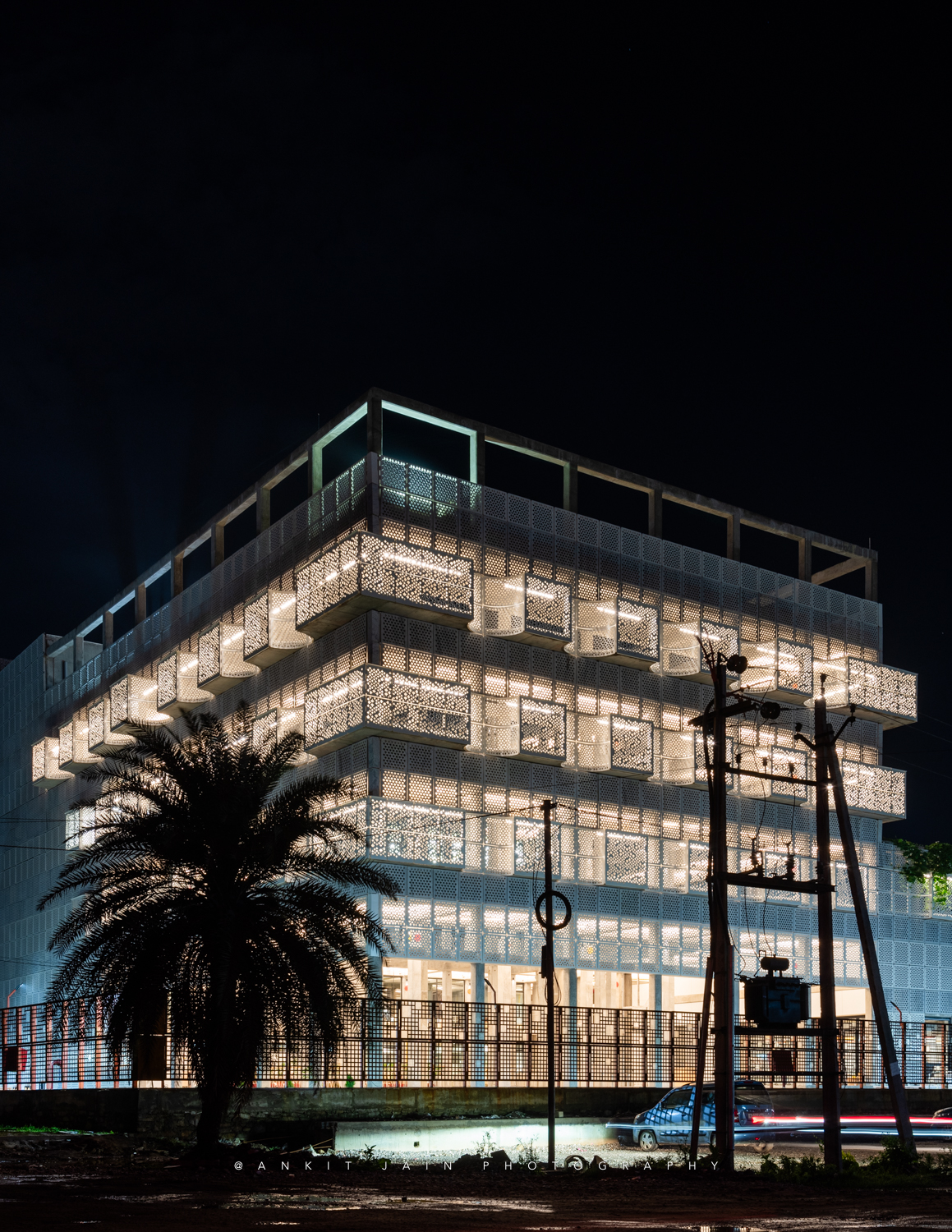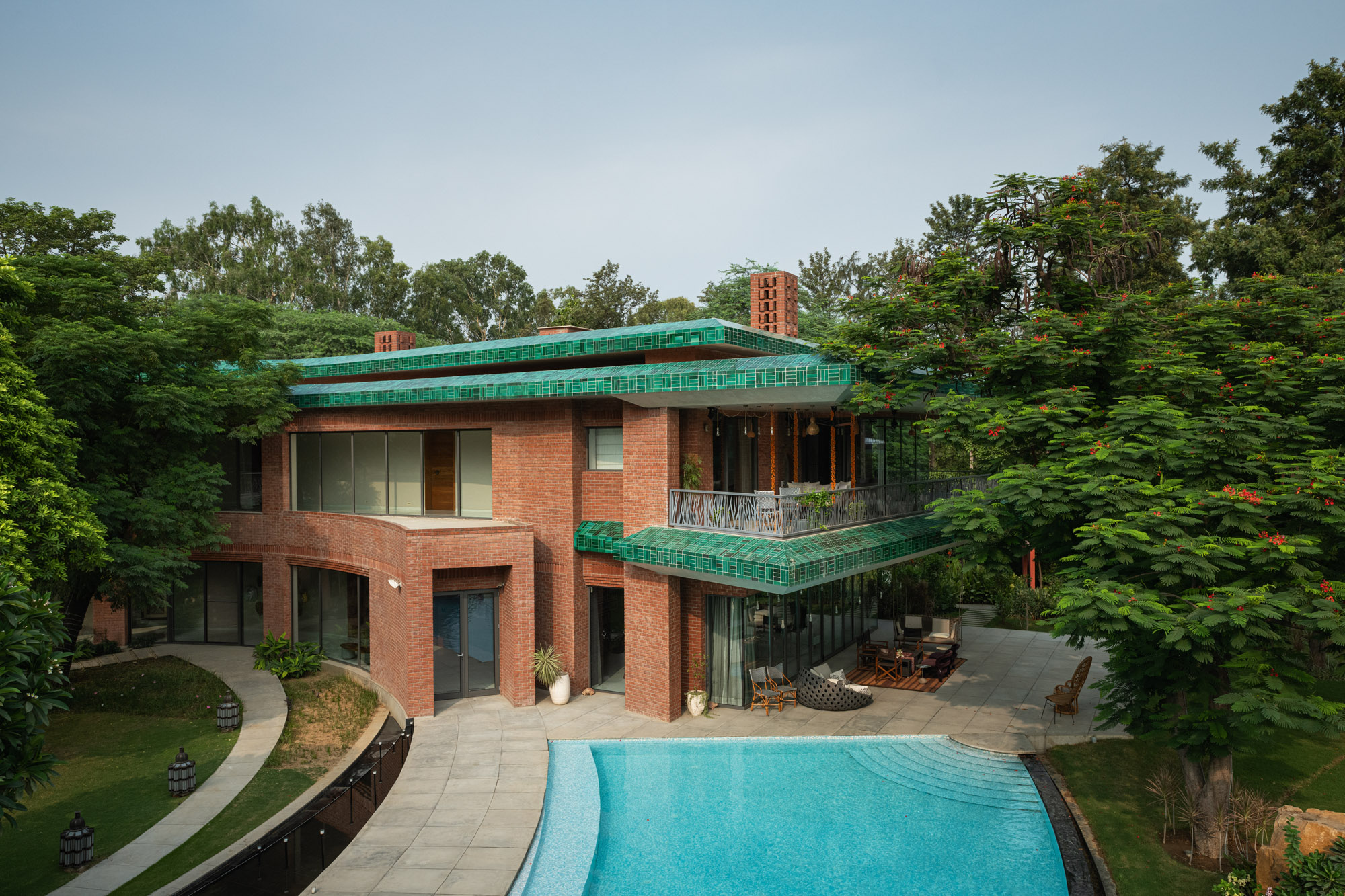Discover Third Space, a multifunctional hub in the heart of Rajasthan
Third Space by Studio Saar is a multifunctional creative and learning hub in the heart of Rajasthan, uniting the community through ‘openness, accessibility, and inclusivity’

Studio Saar’s latest completion, Third Space in Udaipur, India, is an unusual commission. A project for local not-for-profit organisation Dharohar, this is a building that combines many uses and purposes, conceived to offer several affordable resources to the Rajasthan city in one fell swoop.

Third Space is a place for learning, working with makers to create extra-curricular activities for the area supporting the preservation of crafts; it is a leisure centre offering a range of diverse, hands-on activities, such as a maker's space and Tinkering Lab; it hosts a performing arts and exhibition programme; it creates flexible space for people to gather, relax and spend time in its several cool, open-air courtyards; and it provides the community with a variety of areas for social wellbeing, retail and co-working to boot.
Take a tour of Third Space by Studio Saar
To define the brief, the Anglo-Indian studio, headed by Ananya Singhal and Jonny Buckland, worked closely with Dharohar – a philanthropic institution funded and managed by the Singhal family, owners of Secure Meters, an Indian multinational smart metering and energy management business, of which Singhal is joint managing director.

As a result, the design draws on the non-profit’s key principles of ‘openness, accessibility, and inclusivity’. Additionally, Singhal explains, ‘we wanted the building to be of its place, and fitting to the Indian vernacular’. The project’s intricate detail throughout, and features such as the inverted stepwell that connects the underground parking levels and the public plaza above, speak to that.

The centre is composed of a series of open and enclosed spaces held within a permeable volume wrapped in a perforated façade made of marble and steel –offcuts of the former material were used in the floor, and offcuts of the latter, in screen partitions inside.

More environmentally friendly gestures in the construction include the use of waste marble-rubble and lime mortar from nearby mines (Udaipur is known for its marble quarries) in the masonry walls and flooring; marble dust replacing 10 per cent of the cement, and 20 per cent of the sand/aggregate in the concrete mix; passive cooling systems throughout; and native trees and other plants at multiple levels, which help users connect to the outdoors while also contributing to the restoration of local wildlife and flora.

‘We want it to be a place where people are not afraid to come in and are curious to try things,’ says Singhal. ‘We want to inspire collaboration and introduce people with the same interests to each other.’
Wallpaper* Newsletter
Receive our daily digest of inspiration, escapism and design stories from around the world direct to your inbox.

An exhibition by Studio Saar titled ‘Craft, Community, Connection’ will be on show at the Crafts Council Gallery in London, 7 – 15 June as part of the London Festival of Architecture 2024
A version of this article appears in the July 2024 issue of Wallpaper*,$ available in print, on the Wallpaper* app on Apple iOS, and to subscribers of Apple News +. Subscribe to Wallpaper* today
Ellie Stathaki is the Architecture & Environment Director at Wallpaper*. She trained as an architect at the Aristotle University of Thessaloniki in Greece and studied architectural history at the Bartlett in London. Now an established journalist, she has been a member of the Wallpaper* team since 2006, visiting buildings across the globe and interviewing leading architects such as Tadao Ando and Rem Koolhaas. Ellie has also taken part in judging panels, moderated events, curated shows and contributed in books, such as The Contemporary House (Thames & Hudson, 2018), Glenn Sestig Architecture Diary (2020) and House London (2022).
-
 All-In is the Paris-based label making full-force fashion for main character dressing
All-In is the Paris-based label making full-force fashion for main character dressingPart of our monthly Uprising series, Wallpaper* meets Benjamin Barron and Bror August Vestbø of All-In, the LVMH Prize-nominated label which bases its collections on a riotous cast of characters – real and imagined
By Orla Brennan
-
 Maserati joins forces with Giorgetti for a turbo-charged relationship
Maserati joins forces with Giorgetti for a turbo-charged relationshipAnnouncing their marriage during Milan Design Week, the brands unveiled a collection, a car and a long term commitment
By Hugo Macdonald
-
 Through an innovative new training program, Poltrona Frau aims to safeguard Italian craft
Through an innovative new training program, Poltrona Frau aims to safeguard Italian craftThe heritage furniture manufacturer is training a new generation of leather artisans
By Cristina Kiran Piotti
-
 Shalini Misra’s Delhi home is a seasonal sanctuary ‘made in India’
Shalini Misra’s Delhi home is a seasonal sanctuary ‘made in India’Interior designer Shalini Misra’s retreat in the Indian capital champions modernist influences, Islamic ancestry and local craftsmanship
By Sunil Sethi
-
 A triplex Mumbai penthouse contains sculptural staircases and expansive terraces
A triplex Mumbai penthouse contains sculptural staircases and expansive terracesEnso House is a multigenerational Mumbai penthouse by S+PS Architects that combines a reorganised interior programme with bespoke finishes and crafts
By Jonathan Bell
-
 This ‘architourism’ trip explores India’s architectural history, from Mughal to modernism
This ‘architourism’ trip explores India’s architectural history, from Mughal to modernismArchitourian is offering travellers a seven-night exploration of northern India’s architectural marvels, including Chandigarh, the city designed by Le Corbusier
By Anna Solomon
-
 At the Institute of Indology, a humble new addition makes all the difference
At the Institute of Indology, a humble new addition makes all the differenceContinuing the late Balkrishna V Doshi’s legacy, Sangath studio design a new take on the toilet in Gujarat
By Ellie Stathaki
-
 Pretty in pink: Mumbai's new residential tower shakes up the cityscape
Pretty in pink: Mumbai's new residential tower shakes up the cityscape'Satguru’s Rendezvous' in Mumbai houses luxury apartments behind its elegant fluted concrete skin. We take a tour.
By Jonathan Bell
-
 Join our world tour of contemporary homes across five continents
Join our world tour of contemporary homes across five continentsWe take a world tour of contemporary homes, exploring case studies of how we live; we make five stops across five continents
By Ellie Stathaki
-
 Walk through an Indian villa near Mumbai, where time slows down
Walk through an Indian villa near Mumbai, where time slows downIn this Indian villa, Architecture Brio weaves together water features, stunning gardens and graceful compositions to create a serene retreat near Mumbai
By Stephen Crafti
-
 Nine emerging Indian architecture studios on a mission to transform their country
Nine emerging Indian architecture studios on a mission to transform their countryWe survey the emerging Indian architecture studios and professionals, who come armed with passion, ideas and tools designed to foster and bolster their country's creative growth
By Ellie Stathaki